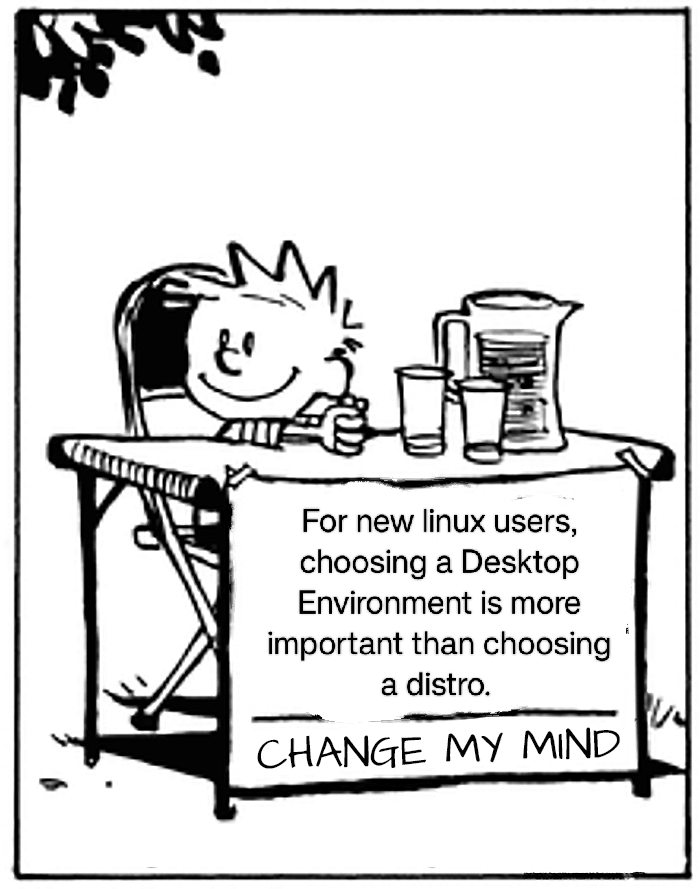this post was submitted on 21 Jan 2024
1749 points (97.8% liked)
linuxmemes
21291 readers
857 users here now
Hint: :q!
Sister communities:
- LemmyMemes: Memes
- LemmyShitpost: Anything and everything goes.
- RISA: Star Trek memes and shitposts
Community rules (click to expand)
1. Follow the site-wide rules
- Instance-wide TOS: https://legal.lemmy.world/tos/
- Lemmy code of conduct: https://join-lemmy.org/docs/code_of_conduct.html
2. Be civil
- Understand the difference between a joke and an insult.
- Do not harrass or attack members of the community for any reason.
- Leave remarks of "peasantry" to the PCMR community. If you dislike an OS/service/application, attack the thing you dislike, not the individuals who use it. Some people may not have a choice.
- Bigotry will not be tolerated.
- These rules are somewhat loosened when the subject is a public figure. Still, do not attack their person or incite harrassment.
3. Post Linux-related content
- Including Unix and BSD.
- Non-Linux content is acceptable as long as it makes a reference to Linux. For example, the poorly made mockery of
sudoin Windows. - No porn. Even if you watch it on a Linux machine.
4. No recent reposts
- Everybody uses Arch btw, can't quit Vim, and wants to interject for a moment. You can stop now.
Please report posts and comments that break these rules!
Important: never execute code or follow advice that you don't understand or can't verify, especially here. The word of the day is credibility. This is a meme community -- even the most helpful comments might just be shitposts that can damage your system. Be aware, be smart, don't fork-bomb your computer.
founded 1 year ago
MODERATORS
you are viewing a single comment's thread
view the rest of the comments
view the rest of the comments

I am experimenting with Linux on two devices: My daily driver laptop and a desktop.
The laptop is set on a dual boot from 2 SSDs. The first SSD contains Windows and has one 2TB NTFS partition. The other SSD has a 250GB partition for ext4 where Ubuntu lives and a 750GB partition for ExFAT.
The desktop has a 500GB SSD with ext4 for the OS, and has two 4 year old 2TB HDDs for data. This is why I'm trying to run them in RAID 1. For cross compatibility (and what they were already formatted as), they are in NTFS.
What do you think of that? Am I using adequate filesystems?